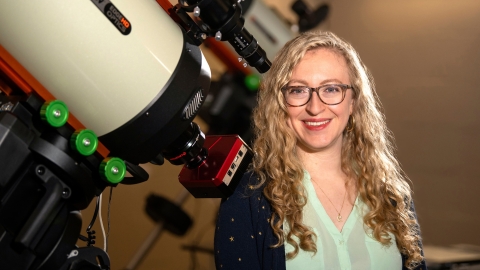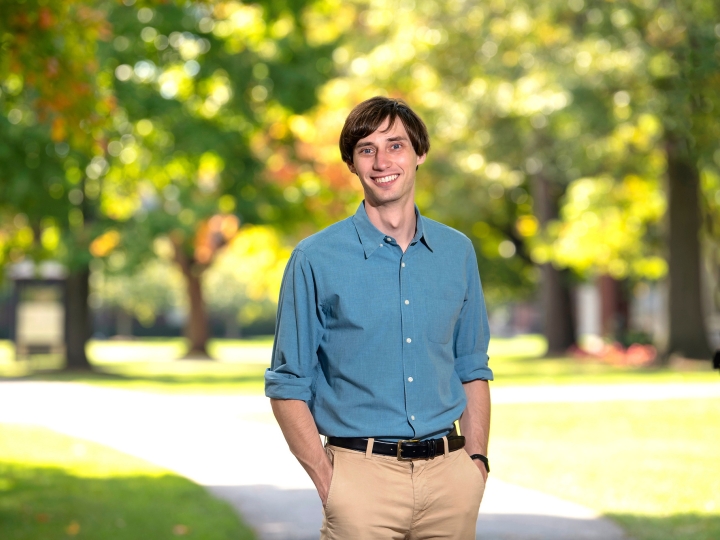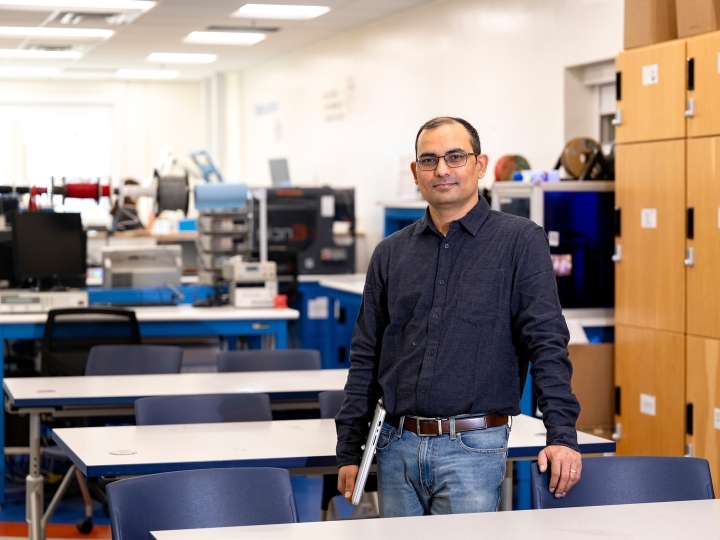
Jackie Villadsen, Physics & Astronomy
April 3, 2023
Professor Jackie Villadsen, physics & astronomy, studies radio waves emitted by distant stars. Photo by Emily Paine, Communications
"I love working with students. I get to experience the joy of discovering physics all over again."
Professor Jackie Villadsen, physics & astronomy, is helping to answer one of science's burning questions: Are there Earth-like planets in far-off solar systems?
To find out, she and her research team are studying bursts of radio waves from stars like the red dwarf YZ Ceti, which lies 12 light-years away from our solar system.
As they've documented in the journal Nature Astronomy, those bursts could indicate that a nearby planet, YZ Ceti b, has a magnetic field similar to Earth's. "This is the first case where someone has detected bursts of radio waves from a star that's known to have a planet really close to it," she says.
It's a dream come true for someone who developed a fascination with astronomy in high school. During a physics class in her senior year, she saw an image of a galaxy that completely enthralled her. "I thought, 'That's the prettiest thing I've ever seen,' " she says. "It was one of those transcendent moments."
That class instilled in her a love of physics — and the math that powers it. "The fact that you can use math to explain the behavior of the natural world and to predict what will happen is really extraordinary," she says. "Before I discovered the link between math and physics, I thought graphing cosines was just a weird form of torture. But it turns out that cosines help discover planets outside our solar system."
After earning degrees from MIT and Caltech, Villadsen completed a postdoctoral fellowship at the National Radio Astronomy Observatory (NRAO) in Virginia. She then taught at St. Mary's College of Maryland and Vassar College before joining the Bucknell faculty.
Villadsen has been very intentional about choosing to teach at undergraduate liberal arts institutions. She says she appreciates how schools like Bucknell value teaching and encourage interdisciplinary interactions.
"When I was an undergraduate, I really didn't get to learn about how science interacts with society or the social elements of doing science," she says.
That's not the case for her Bucknell students. For example, in Villadsen's introduction to astronomy class, students spend a day learning about the controversy surrounding the placement of telescopes on Mauna Kea, a dormant Hawaiian volcano that holds cultural significance. "We spend the session reading articles that feature perspectives from different Native Hawaiians," she says. "We seek to learn from people whose lives are closer to this situation."
Despite her focus on far-off stars, Villadsen never loses sight of her students. She involves undergraduates in her research and uses grant funding to send them to professional conferences of groups like the American Astronomical Society.
"That can be a really beneficial opportunity for students to meet lots of people in different research and academic careers and to network and learn about opportunities in both industry and academic research," she says.
This summer, Villadsen and Bucknell physics student Arjun Anand '25 will continue studying the radio bursts between stars and their orbiting planets during a research trip at NRAO.

